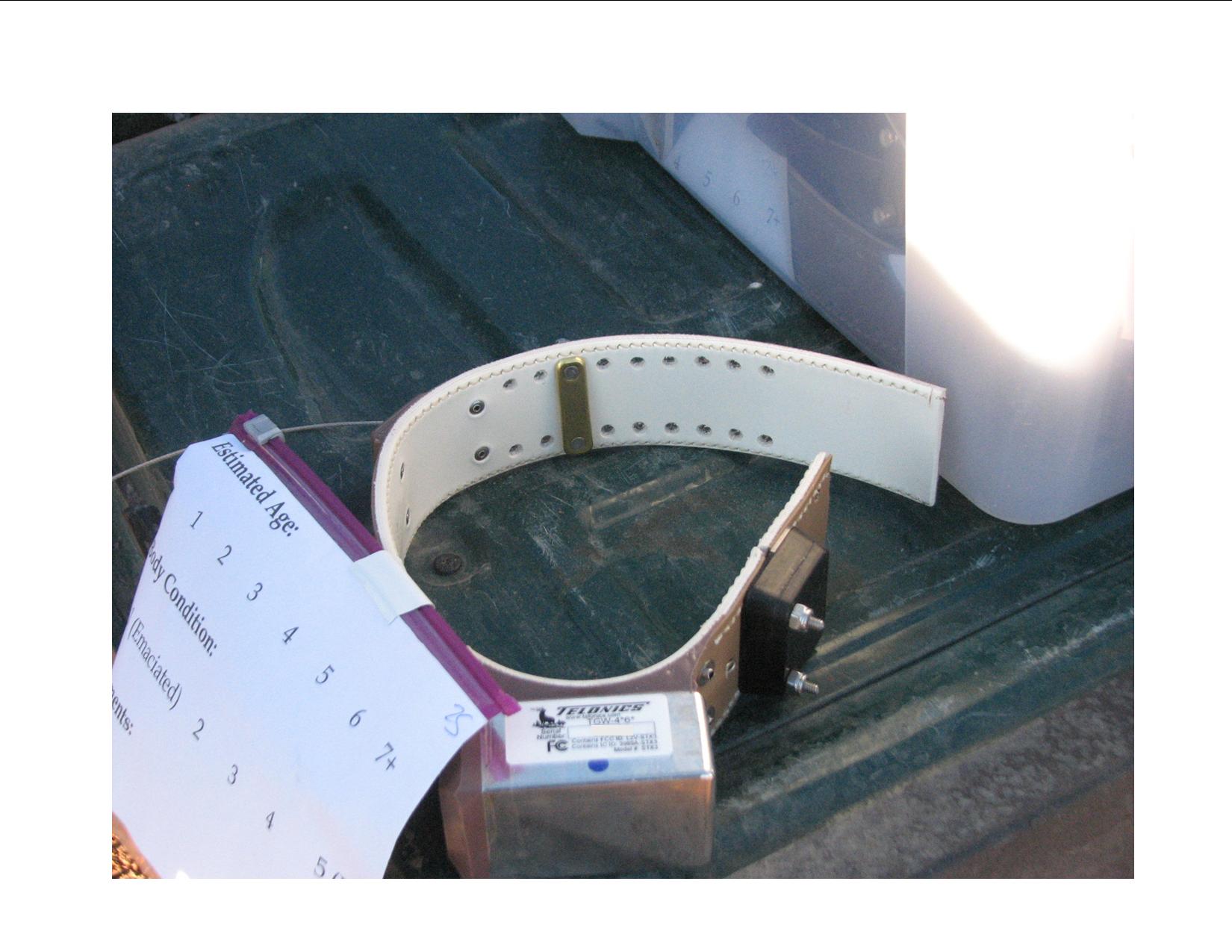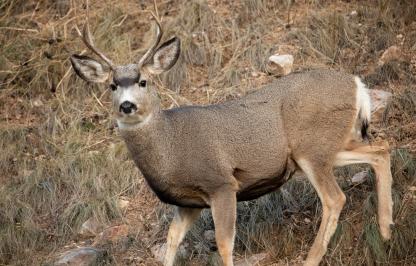Rochelle Hills mule deer captures
In early December 2019, 35 mule deer does in the Cheyenne River Mule Deer Herd were captured and fitted with GPS collars, launching a five-year study to learn about their habitat preferences, daily and seasonal movements and identify causes of mortality.
The research project, led by Wyoming Game and Fish personnel and focused in the Rochelle Hills of Deer Hunt Area 10, is funded with assistance from Thunder Basin Coal Company, through collaboration with the U.S. Forest Service, and the Wyoming Sportsman’s Group based in Gillette.
“We have not had many large-scale mule deer studies in northeast Wyoming, so this is an exciting opportunity,” said Gillette Wildlife Biologist Erika Peckham. “The information we gain from this study will show us what areas and habitats are used by the deer at different times of the year, where they are traveling and potentially where some of them are having fawns.”
The capture operation took place on Dec. 3. A professional wildlife capture crew caught the deer via a helicopter using net guns to ensnare the animals. Captures were completed on U.S. Forest Service land and on the property of six local landowners who generously allowed access for the operation.
Each deer was fitted with a GPS collar that will track its movements for the next five to six years, depending on the collar’s battery life. The collars will transmit deer locations every eight hours, allowing Peckham to view their movements on her computer regularly in the coming months. The collars are recording three-hour movements as well, which are stored onboard the collar and will be downloaded when the collar is retrieved from a deceased animal or at the end of the study when it is programmed to release from the animal.

The collars will also send Peckham a notification if an animal does not move for several hours and has likely died. She can then travel to the location as quickly as possible to determine the cause of death.
The 2019 fawn-to-doe ratio in Area 10 is 53 fawns per 100 does. A higher ratio is needed to maintain or build deer numbers. Under good weather and habitat conditions, ratios can be much higher, such as in 2014 when the ratio was 89 fawns per 100 does.
Area 10 is unique because it offers public land hunting in a region that is predominantly private land. Information obtained during the study will be used by Peckham and other wildlife managers to make future management decisions about the herd. The information will also allow habitat biologists to pinpoint areas that would benefit from habitat improvement projects.
The research project, led by Wyoming Game and Fish personnel and focused in the Rochelle Hills of Deer Hunt Area 10, is funded with assistance from Thunder Basin Coal Company, through collaboration with the U.S. Forest Service, and the Wyoming Sportsman’s Group based in Gillette.
“We have not had many large-scale mule deer studies in northeast Wyoming, so this is an exciting opportunity,” said Gillette Wildlife Biologist Erika Peckham. “The information we gain from this study will show us what areas and habitats are used by the deer at different times of the year, where they are traveling and potentially where some of them are having fawns.”
The capture operation took place on Dec. 3. A professional wildlife capture crew caught the deer via a helicopter using net guns to ensnare the animals. Captures were completed on U.S. Forest Service land and on the property of six local landowners who generously allowed access for the operation.
Each deer was fitted with a GPS collar that will track its movements for the next five to six years, depending on the collar’s battery life. The collars will transmit deer locations every eight hours, allowing Peckham to view their movements on her computer regularly in the coming months. The collars are recording three-hour movements as well, which are stored onboard the collar and will be downloaded when the collar is retrieved from a deceased animal or at the end of the study when it is programmed to release from the animal.
The collars will also send Peckham a notification if an animal does not move for several hours and has likely died. She can then travel to the location as quickly as possible to determine the cause of death.
The 2019 fawn-to-doe ratio in Area 10 is 53 fawns per 100 does. A higher ratio is needed to maintain or build deer numbers. Under good weather and habitat conditions, ratios can be much higher, such as in 2014 when the ratio was 89 fawns per 100 does.
Area 10 is unique because it offers public land hunting in a region that is predominantly private land. Information obtained during the study will be used by Peckham and other wildlife managers to make future management decisions about the herd. The information will also allow habitat biologists to pinpoint areas that would benefit from habitat improvement projects.
3076727418



